Key takeaways
- Collaboration thrives on trust, vulnerability, and open communication, allowing artists to transform individual efforts into a shared vision.
- Finding like-minded collaborators involves seeking authentic spaces and aligning values, often leading to deeper creative partnerships.
- Effective communication includes active listening and thoughtful questioning, helping to nurture trust and invite deeper exploration of artistic ideas.
- Navigating challenges in collaborations requires empathy and openness, fostering growth and stronger connections through shared experiences.

Understanding artist collaboration basics
Collaboration, at its core, is about connection. I’ve found that understanding the basics starts with recognizing the unique perspectives each artist brings to the table. Have you ever noticed how a simple conversation can spark an idea you hadn’t considered before?
Trust plays a huge role in successful collaboration. From my own experience, being open to vulnerability and sharing unfinished work has led to some of my most authentic creations. It’s this openness that transforms individual efforts into a shared vision.
Communication is another foundation I never overlook. Asking questions like “What do you see happening here?” or “How does this feel to you?” keeps the creative flow alive and ensures everyone’s voice is heard. Without clear, honest dialogue, collaboration can quickly lose its magic.
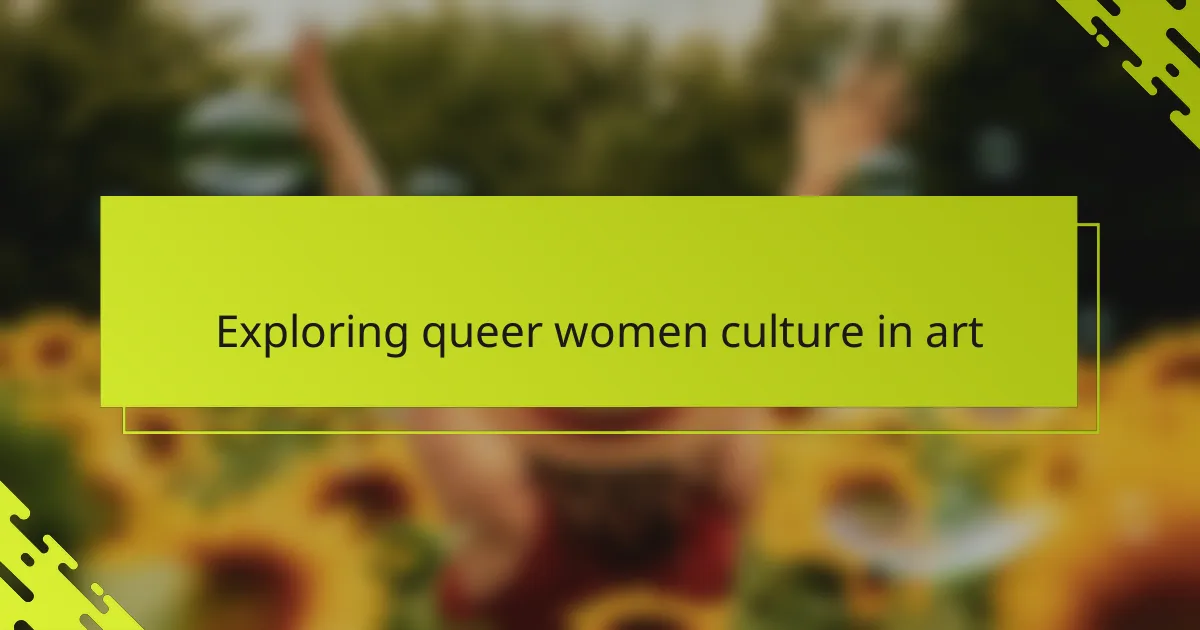
Exploring queer women culture in art
When I delve into queer women culture through art, I’m constantly amazed by the depth of stories waiting to be told. How often do we get to see expressions of identity, resilience, and community woven so intimately together? It’s in these shared experiences that collaboration becomes a powerful act of visibility and affirmation.
One of my most memorable collaborations happened when a fellow queer artist and I chose to reflect on our journeys with self-acceptance. The emotions felt raw and real, and working together helped me grasp nuances I hadn’t noticed in my own story. This process made me realize that exploring queer culture in art isn’t just about representation—it’s about connecting soul to soul.
I often wonder, what does queer women culture really look like through the eyes of others? Each collaboration peels back another layer, revealing vibrant narratives that challenge stereotypes and celebrate authenticity. It’s this dynamic and evolving exploration that keeps me inspired and eager to create alongside others.
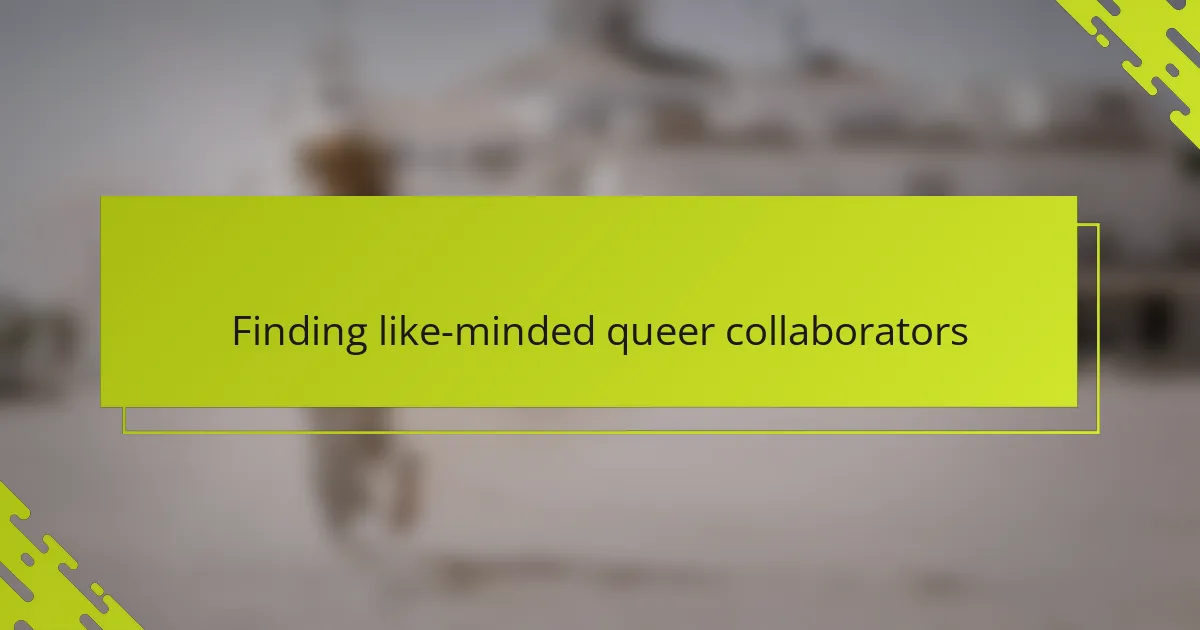
Finding like-minded queer collaborators
Finding like-minded queer collaborators often starts with seeking spaces where authenticity is welcomed and celebrated. I remember attending a small local queer art show and being drawn to a painter whose work resonated deeply with my own experiences—connecting with them felt like discovering a creative kindred spirit. Have you ever stumbled upon someone whose perspective instantly felt like a mirror reflecting parts of your own identity?
Building these connections requires more than shared labels; it’s about aligning values and intentions. In my collaborations, when I meet others who prioritize honesty, vulnerability, and community, the energy naturally flows. Sometimes, a quick coffee chat reveals more about a potential collaborator’s heart and vision than pages of portfolios ever could.
I also find that online communities dedicated to queer women artists can be goldmines for connection, but it takes patience. What draws me in is the openness of these spaces—people willing to share their struggles and triumphs alike. Have you ever found that the most powerful collaborations start with a simple message saying, “I see you”?
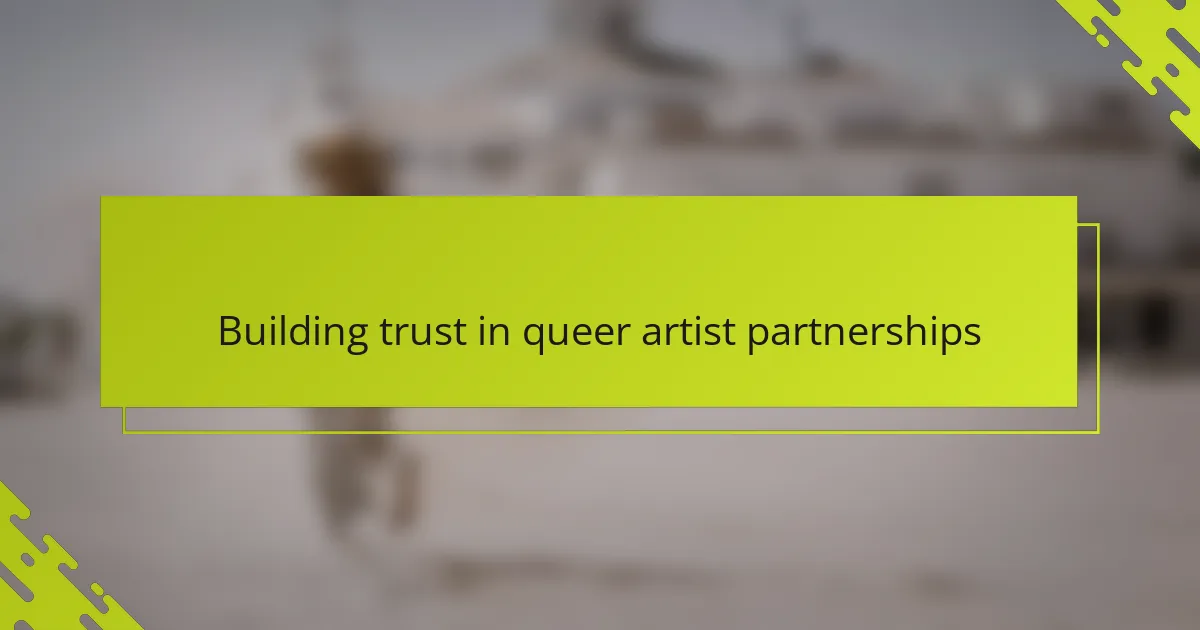
Building trust in queer artist partnerships
Trust isn’t built overnight, especially in queer artist partnerships where shared histories and identities add layers of meaning. I’ve noticed that when I’m willing to be vulnerable about my creative doubts or personal stories, it invites others to do the same. Doesn’t it feel like something magical happens when walls come down, and we meet each other in that honest space?
One time, I collaborated with a queer poet who was initially hesitant to share her rough drafts. As I encouraged her to express even the messy parts, our partnership deepened beyond the artwork—it became a safe space to explore fears and hopes. From that experience, I learned that trust thrives when we not only respect each other’s voices but also hold space for uncertainty.
I often ask myself, how can trust grow when we rush the process? Through my collaborations, I’ve seen that patience and consistent support are key. Small gestures like checking in on how someone feels about a piece or simply listening without judgment create a foundation where creativity can flourish freely.
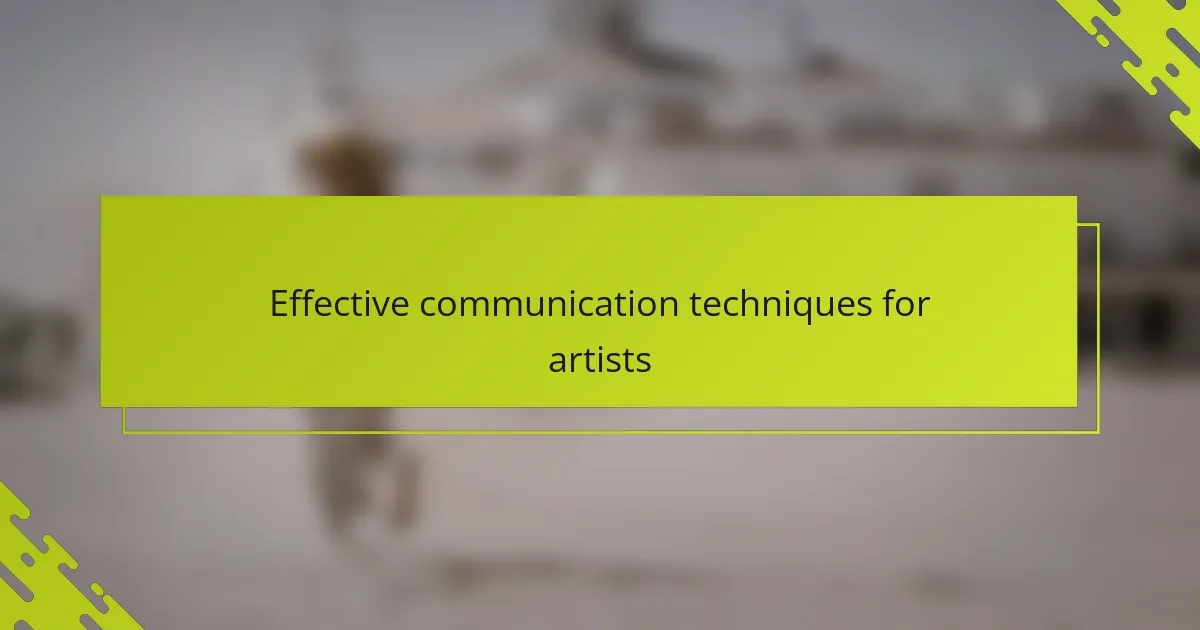
Effective communication techniques for artists
Clear and compassionate communication is the bridge that connects artistic visions. I’ve found that actively listening—really tuning in without planning my next response—opens up new creative pathways. Have you noticed how simply reflecting back what you hear can deepen understanding and spark fresh ideas?
Sometimes, I use open-ended questions like, “What’s the feeling behind this piece for you?” or “Where do you want this to go next?” These questions invite collaborators to share more deeply, revealing layers I might have missed. It’s not just about exchanging ideas but about creating a shared language where each voice feels valued.
On the flip side, I’ve learned to be mindful of timing and tone, especially when offering feedback. In one collaboration, pausing before responding helped me phrase my thoughts in a way that felt supportive rather than critical. Have you ever experienced how gentle honesty can nurture trust and keep the creative flow alive?
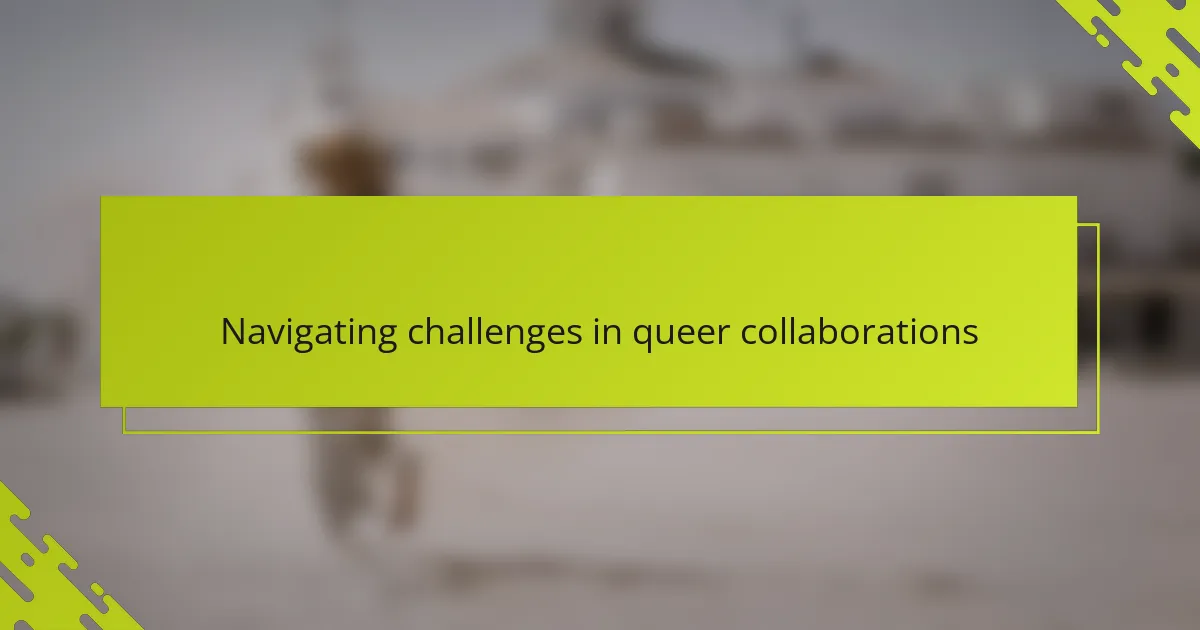
Navigating challenges in queer collaborations
Sometimes, navigating challenges in queer collaborations means confronting unspoken assumptions that can quietly derail creativity. I remember a project where differing approaches to identity politics sparked tension—how do you honor each voice without overshadowing another? It pushed me to listen more deeply, realizing that patience and humility are as crucial as passion.
Conflicts about representation or intentions aren’t uncommon, and I’ve found that addressing them head-on, with empathy, makes a world of difference. Once, a collaborator and I hit a wall over the direction of a piece, but by sitting down and sharing our fears and hopes, we turned disagreement into growth. Would you believe it? That vulnerable conversation actually strengthened our bond and the art itself.
Then there’s the ongoing challenge of balancing emotional labor with creative output. I’ve often had to remind myself that caring for each other’s well-being is part of the collaboration, not separate from it. Have you ever felt drained after a session that veered into personal territory? I’ve learned to create space for healing, because true collaboration thrives not just on ideas, but on genuine human connection.
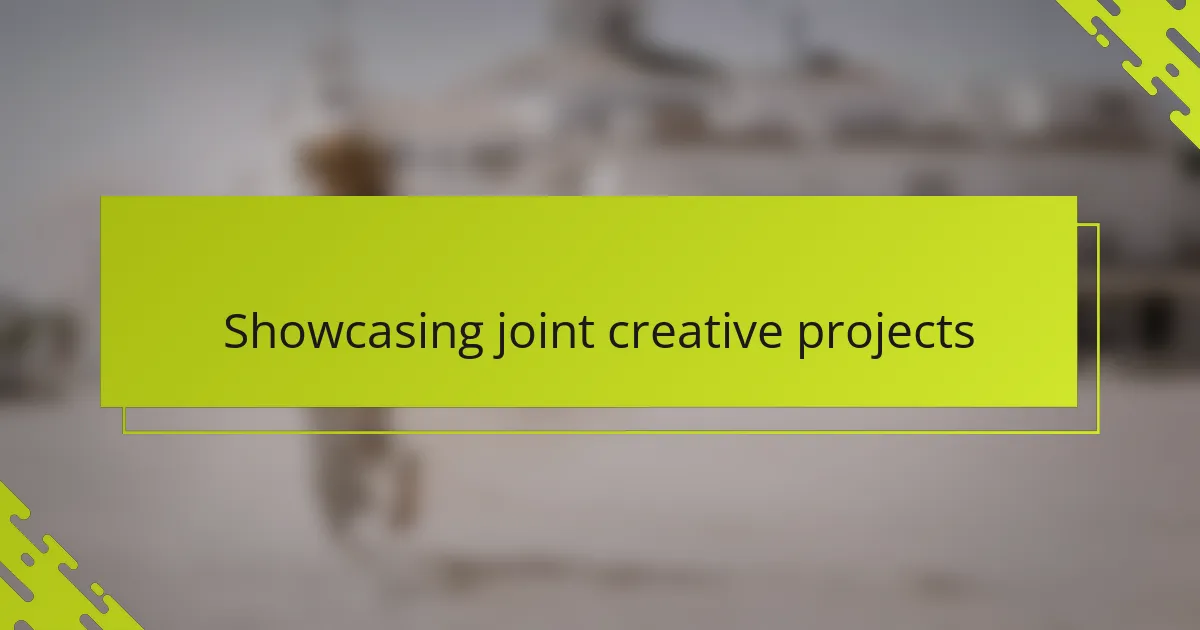
Showcasing joint creative projects
Sharing joint creative projects is one of my favorite ways to celebrate collaboration. When my voice merges with another artist’s, the result often feels like a fresh language—one neither of us spoke alone before. Have you ever seen how combining styles or stories can create something unexpectedly vibrant?
I recall a time when a photographer and I co-created a multimedia piece about belonging. Watching our distinct mediums intertwine brought a sense of magic I hadn’t anticipated. There’s something deeply satisfying about presenting work that is a true mosaic of our shared experiences and visions.
Displaying joint projects also opens up space for dialogue with our audience. It invites others to witness not only the final art but the intertwining journeys behind it. Doesn’t that add a richer layer of meaning when viewers understand the collaborative heart beating beneath the surface?
